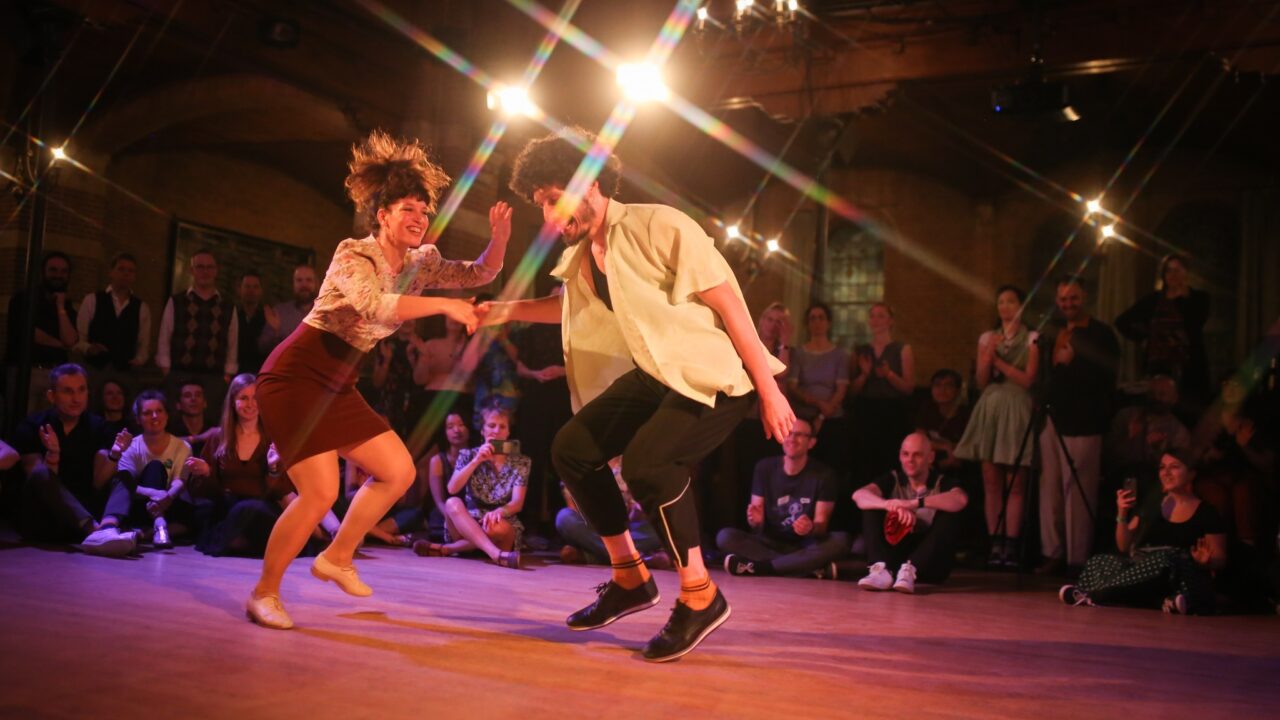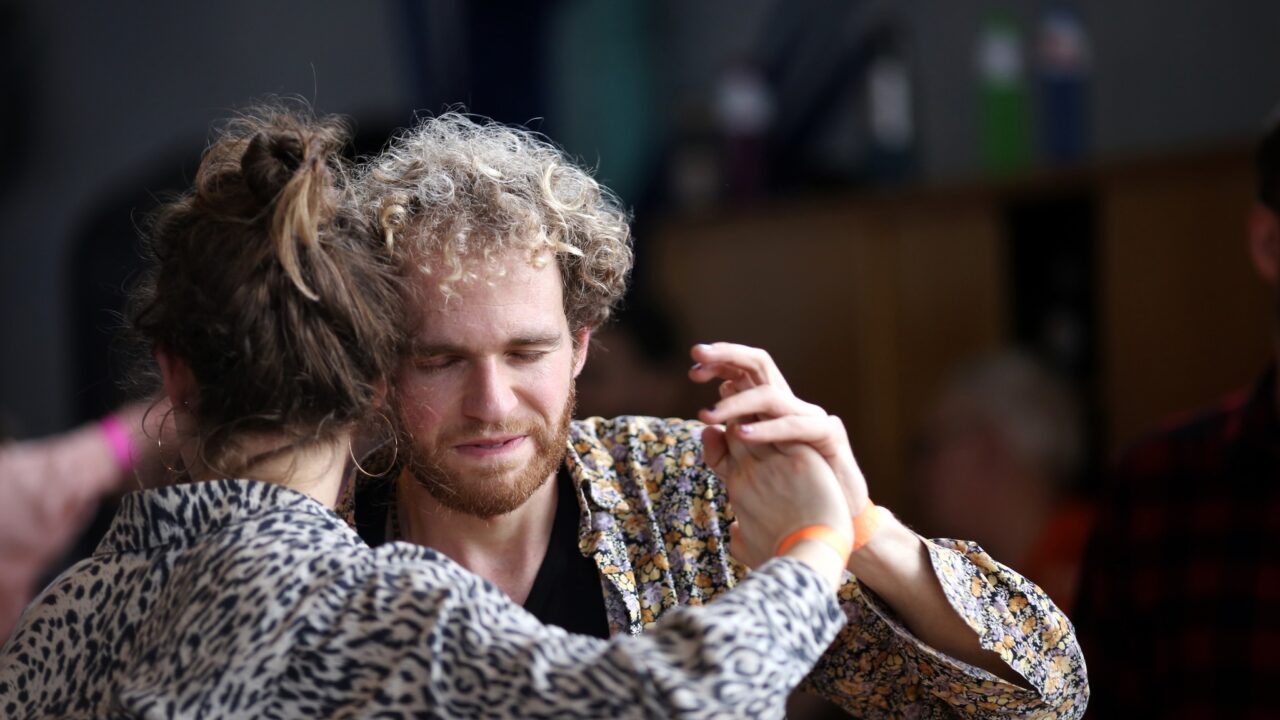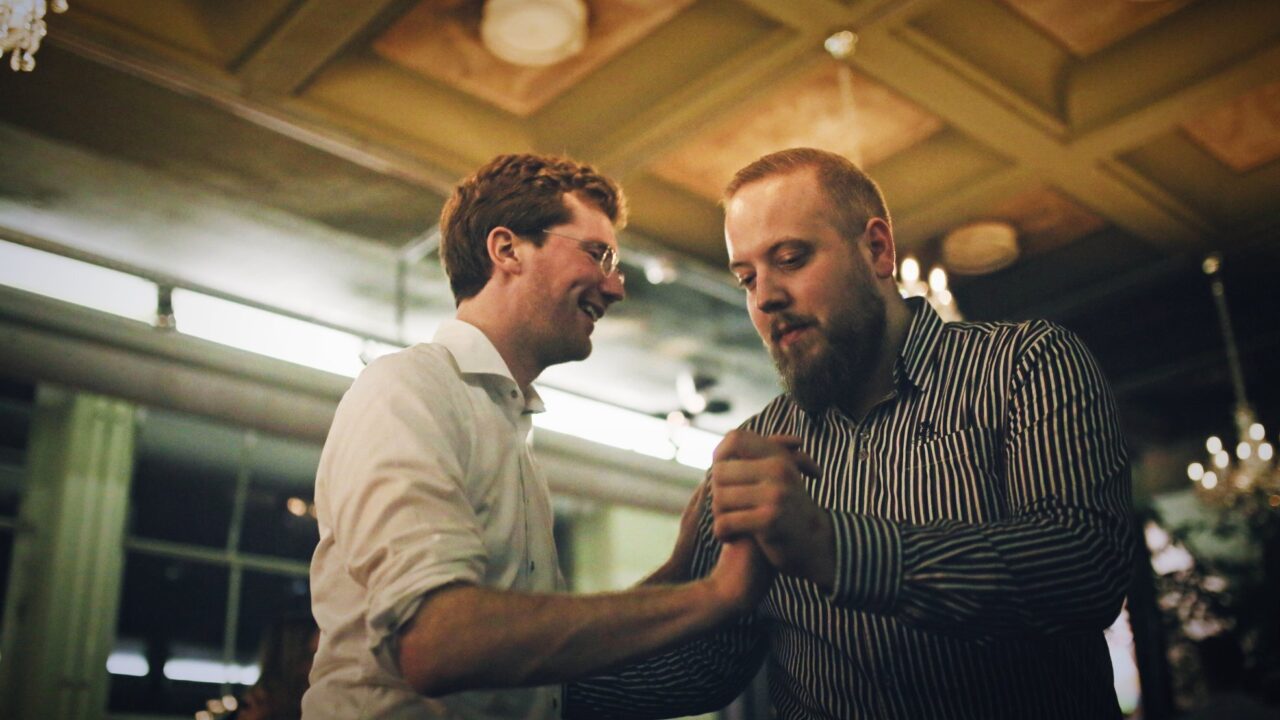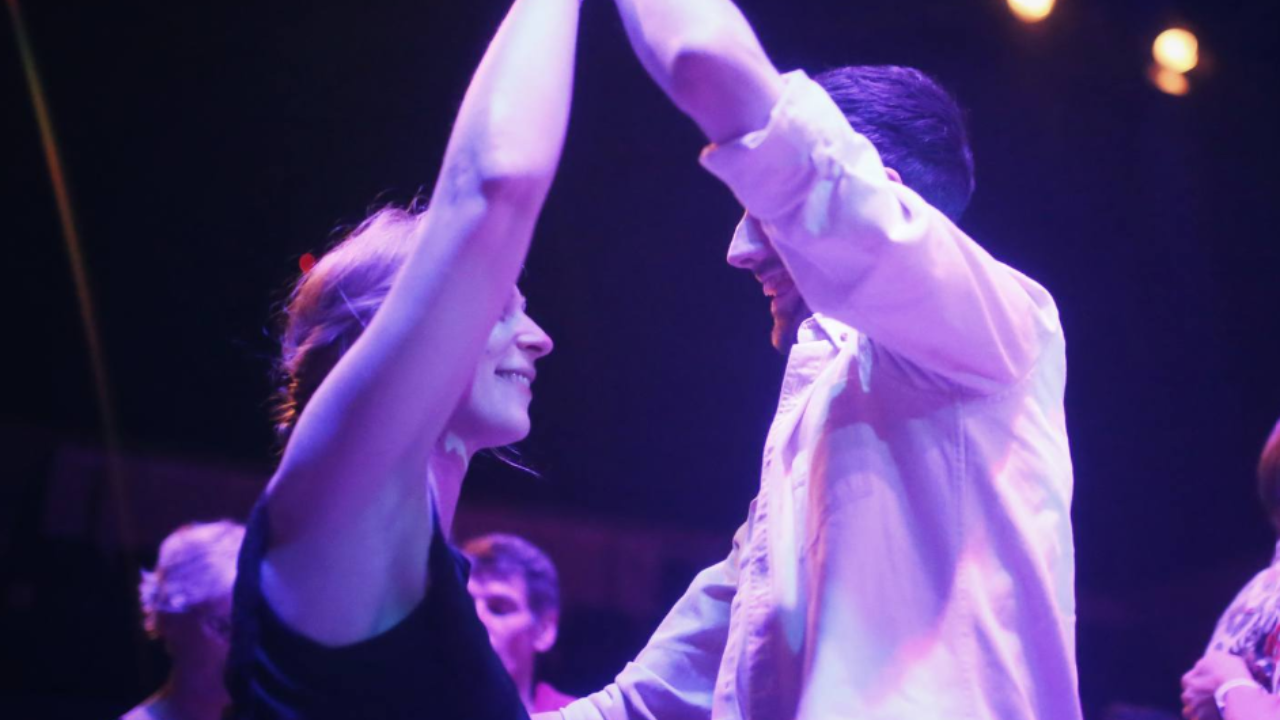Photo credits: Yuliya Khadasevich. All photos taken at local Swing Dance events in Rotterdam.

Lindy Hop
The dance we call 'Lindy Hop' originated in the late 1920s and was an African American dance, from the ballrooms of Harlem. As jazz music grew and evolved, the African American community of Harlem, New York City danced to this music and this energetic, expressive dance was born.
The Savoy ballroom in Harlem became the epicentre of this joyous dance during the 1930's and 1940's, where people would dance every night to the live sounds of Duke Ellington, Count Basie and Ella Fitzgerald, to name but a few!
Lindy Hop takes inspiration from solo jazz dance, charleston and tap, and some of its key components are connection, musicality, and rhythmical variations.
It is a dance of creativity, improvisation, and joy and focuses on the communication between the two dancers - a conversation shared between the dancers and the music.

Solo Jazz Dance
Vernacular Jazz dance has its roots in the African American community of the early part of the 20th Century, and was a way of moving on jazz music, which was also evolving at that time in the US.
The term 'vernacular' means 'a language or dialect spoken by the ordinary people of a particular region'. This term is used as a way to distinguish the dance from modern jazz and Ballet connected jazz dance.
Aside from the vocabulary of Authentic solo jazz dance figures - the Suzie–Q, Shorty George, Tacky Annie, Fall Off the Log, Fish Tails - authentic jazz dance is about being able to express yourself to music, without dancing with a partner.
In the Swing Dance community, a knowledge and understanding of how to move your own body to the music when you dance on your own will always help improve your partnered dancing.
It will bring a knowledge of quality of movement, improve your balance, help you to improvise and become a more musical dancer.

Balboa
Balboa is a form of swing dance that started on the Balboa Peninsula (Newport Beach, California) as early as 1912 and gained popularity in the '30s and '40s. Dance floors filled up with dancers when famous big bands, from Benny Goodman to Artie Shaw, came to play at the Balboa Pavilion and the Rendezvous Ballroom.
The close embrace that makes this swing dance so unique is said to be the result of the crowded dance floors at the time.
The art of Balboa is the subtle communication between the two partners. Especially in the so-called "pure balboa" (where partners do not break away from close embrace), this subtle communication results in a rhythmic play that unites both partners, yet remains a mystery to most spectators.
Balboa can be danced to slow and fast music (up to 300 bpm), which makes it a versatile, energetic and fun dance – a dance essential to your swing vocabulary.

Blues Dance
Blues dancing is a collection of vernacular dance styles that combines and explores many dances. These movements are historical: They have been passed from generation to generation.
Blues dancing is tightly tied to the development of blues music. It has overlapping styles, genres, and comes from a similar culture, which is rooted in African movement.

Slow Bal
The origins of Slow Bal come from the 1940's, but it's roots aren't well known. Slow Bal is danced to slow jazz music, and can be described as both playful and elegant.
There is not a lot of historical footage which shows people dancing Slow Bal. With little material to base the dance on, Slow Bal developed further with influences from all kinds of dances, like Balboa and Tango.

Collegiate Shag
Collegiate shag is an energetic partner dance, belonging to the group of swing dances that originated in the 1930’s. It is known for its hoppy basic step and its quick and varied footwork. Back in the day, the dance was often done by college students, hence its name.
Collegiate Shag is another partnered dance from the Swing Era that is typically done to faster tempos.
